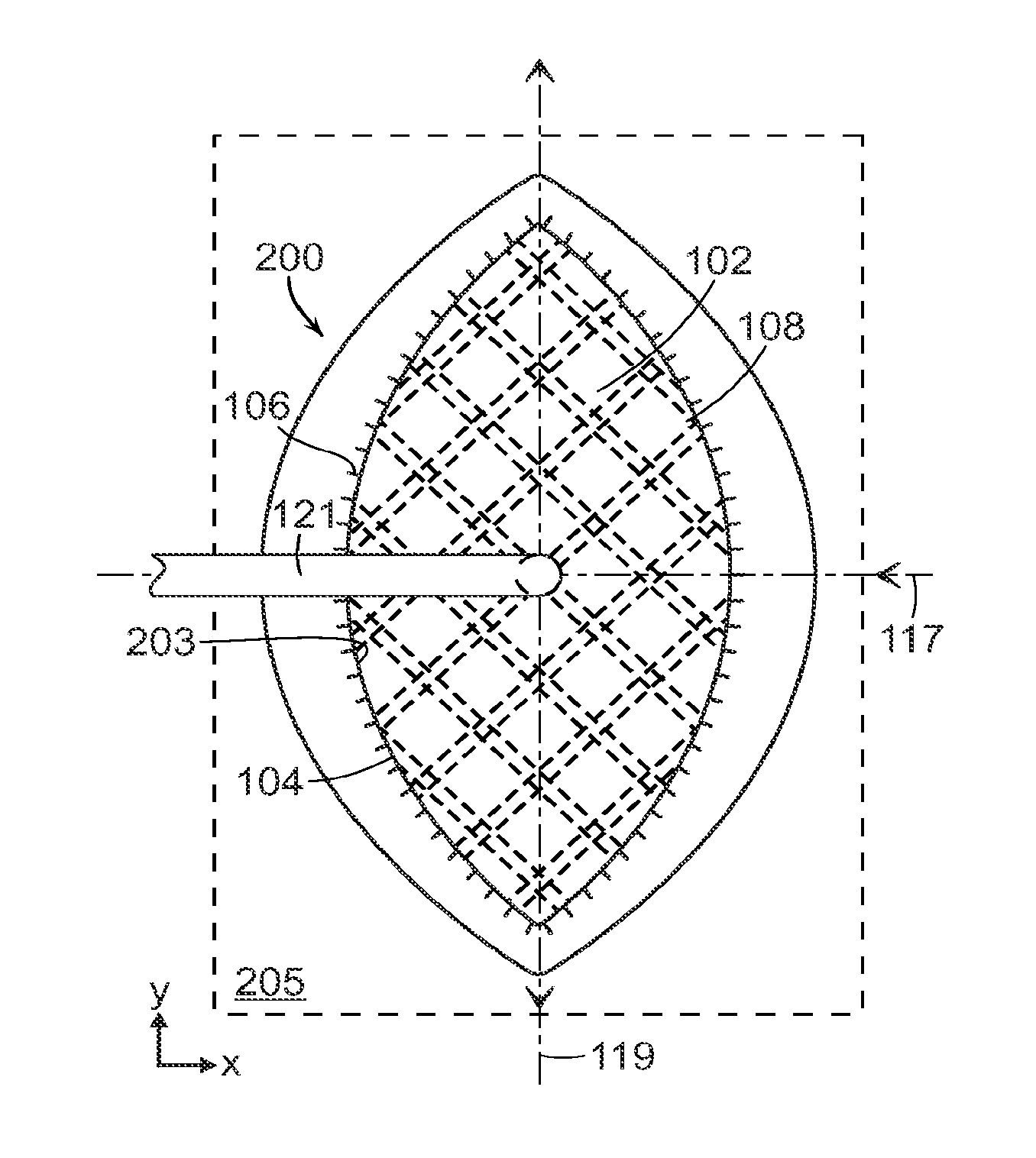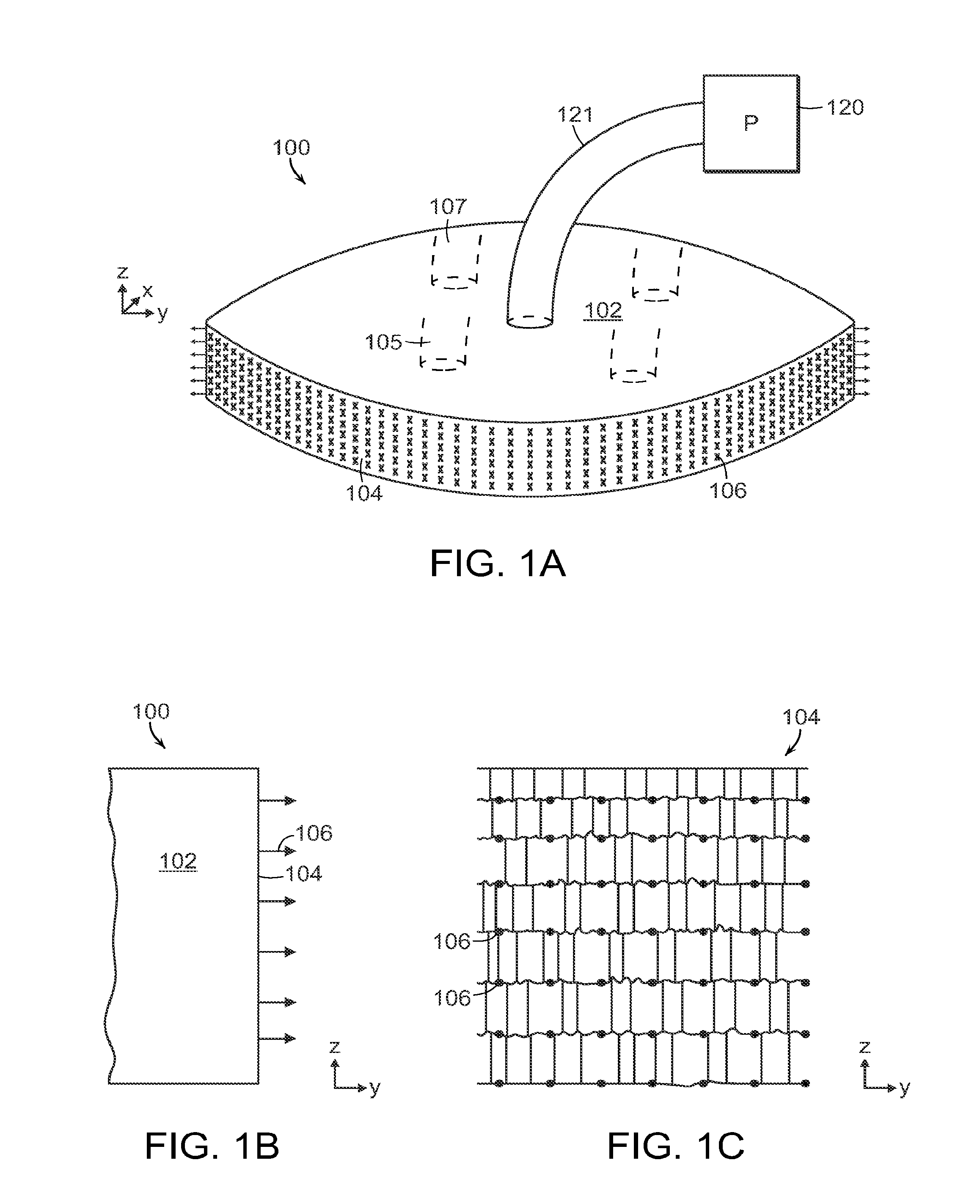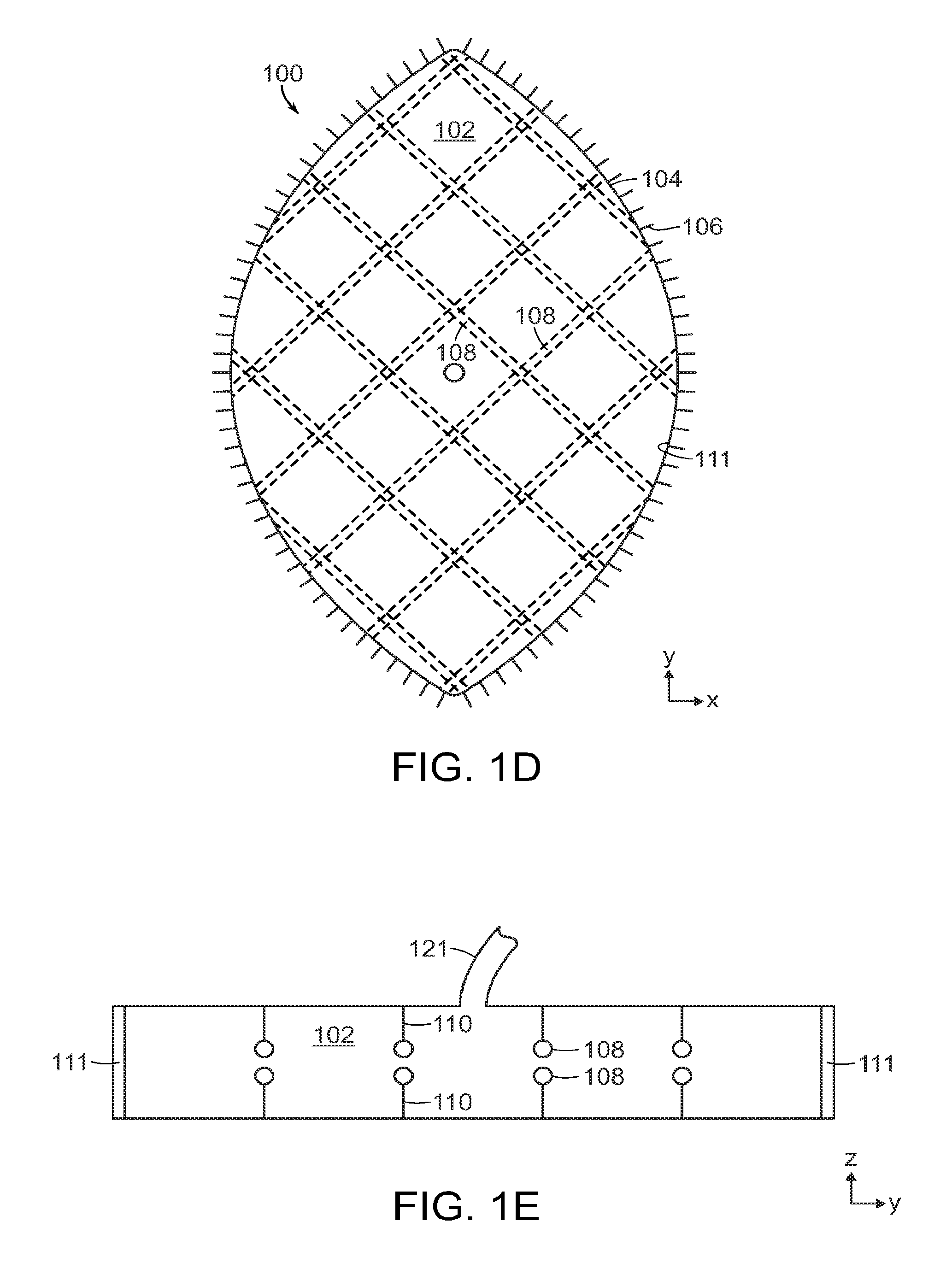Negative pressure wound closure device
a wound closure and negative pressure technology, applied in the field of negative pressure wound closure devices, can solve the problems that prior negative pressure devices did not assist in wound closure, and achieve the effect of reducing costs
- Summary
- Abstract
- Description
- Claims
- Application Information
AI Technical Summary
Benefits of technology
Problems solved by technology
Method used
Image
Examples
Embodiment Construction
[0040]FIGS. 1A-1F illustrate an embodiment of a wound closure device 100 of the present invention. The device 100 includes a wound filler material 102 that is sized and shaped to fit within a wound opening of a human or animal patient. In preferred embodiments, the filler material 102 is a porous, biocompatible material, such as an open cell polyurethane foam. The filler material 102 is also preferentially collapsible, meaning that its size can be reduced along at least one dimension (e.g., length, width, height) by applying a negative pressure to the filler material 102, while at the same time inhibiting contractions or contracting at a slower rate in another direction.
[0041]Extending over at least one surface of the filler material 102, and preferably extending over an outer perimeter surface of the filler material 102 is a tissue grasping surface 104. In one embodiment, the tissue grasping surface 104 is a flexible covering, such as a mesh film, that is secured to the outer perim...
PUM
 Login to View More
Login to View More Abstract
Description
Claims
Application Information
 Login to View More
Login to View More - R&D
- Intellectual Property
- Life Sciences
- Materials
- Tech Scout
- Unparalleled Data Quality
- Higher Quality Content
- 60% Fewer Hallucinations
Browse by: Latest US Patents, China's latest patents, Technical Efficacy Thesaurus, Application Domain, Technology Topic, Popular Technical Reports.
© 2025 PatSnap. All rights reserved.Legal|Privacy policy|Modern Slavery Act Transparency Statement|Sitemap|About US| Contact US: help@patsnap.com



